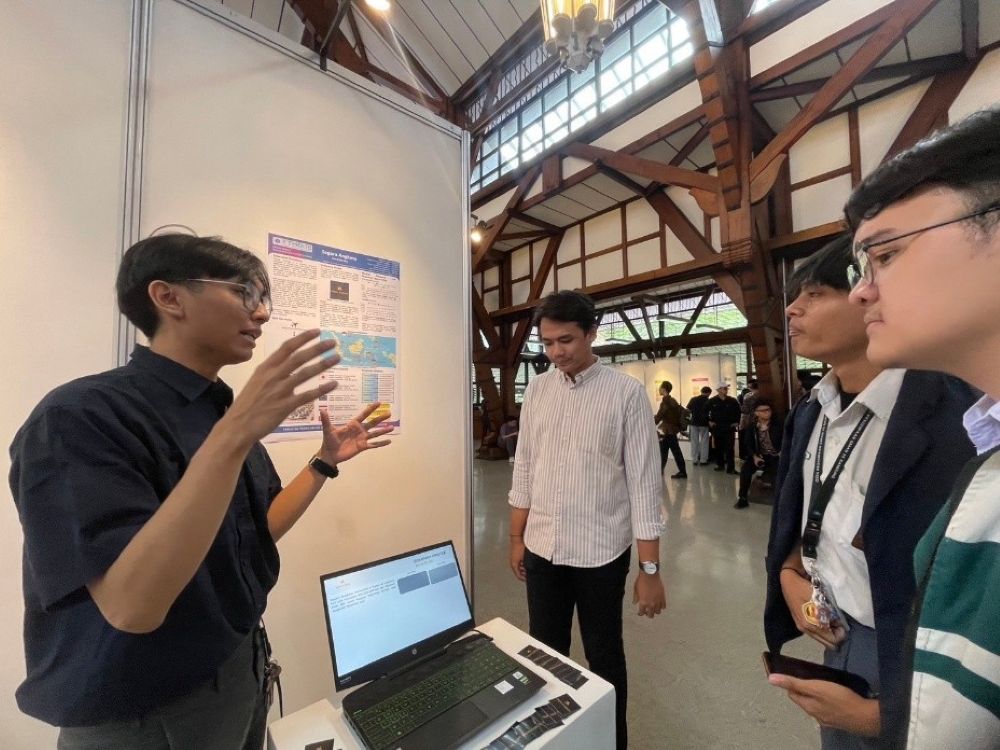Prof. Anggraini Barlian's Scientific Oration: Advancements from Stem Cells to Tissue Engineering and Exosome Contributions to the Future of Healthcare
By Anggun Nindita
Editor Anggun Nindita

BANDUNG, itb.ac.id — The Professor of the School of Life Sciences and Technology Institut Teknologi Bandung (SLST ITB), Prof. Dr. Anggraini Barlian, M.Sc., delivered her scientific oration titled “From Stem Cells to Tissue Engineering and Exosome as Biology’s Contribution for Future Field of Healthcare”, in ITB West Hall, Saturday (16/09/2023).
In her oration, she explained the development of knowledge from the biological sciences since the emergence of regenerative medicine in 1999.
“Regenerative medicine emerged in 1999 as a blended knowledge, which includes tissue engineering, cell transplantation, and stem cell biology,” she explained.
Before becoming involved in stem cell, her research delved on the mechanism of incubation temperature’s influence on sex determination and differentiation, from the scope of a cell to as big as an organ, as well as studies related to aging, including the matters of telomerase and antioxidant enzymes found in the green turtle, an animal famous for its long age.
Since 2010, her research focuses became more aligned with her research group’s study road map, which inclined towards biomedical science. Based on her research timeline, she studied stem cells, tissue engineering, and even exosomes.
“Cell is the smallest functional unit of life. Cells have the characteristic of an organism. Our body is composed of around 37.2 billion cells and originated from around 200 types of cells,” she elaborated during the opening of stem cell discussion session.
Stem cells are sells possessing certain characteristics, such as self-propagation and could differentiate into various types of specialized cells.
Meanwhile, tissue engineering will become an alternative solution when bodily tissue experienced heavy damages from accident or diseases, including the natural process of aging.
A cartilage tissue is composed of cartilage cells or chondrocyte in the body, which exist on a very limited number and possess a very poor regeneration ability.
“This means that when the cartilage tissue experienced damages, it is difficult for the body to repair. This is because cartilage tissues do not possess blood vessels nor cells. Therefore, cartilage tissue engineering became one of the most important tissue engineering to be developed,” she explained.
The basic concept of tissue engineering consisted of three factors, the cell source (stem cells), scaffold (where the cell attaches, grow, and differentiate), as well as bio-factors.
In her research, her research, she focused on three types of tissue engineering: cartilage tissue engineering, bone tissue engineering, and skin tissue engineering.
“Tissue engineering study must be approached from a multidisciplinary approach, which in ITB such approach involves multiple schools or faculties, such as Biology from SLST, Materials Engineering from FMAE, Engineering Physics from FIT, and Physics from FMNS,” she added.
During her research in cartilage tissue engineering, a scaffold was developed from natural ingredients of fibroin protein from silkworm cocoons and spidroin protein from Argiope appensa spiderweb. Scaffold facilitates the growth and development of cells. In comparison to fibroin-based scaffold, the spidroin-based scaffold possessed better capability to support the growth and differentiation of stem cells.
In the other hand, bone tissue engineering became one of the alternatives to deal with major damage on bones, or during circumstances of major bone loss. At the same time, the diversity of Indonesian seas provided geometrial ingredients for scaffold, one of them being sea sponges.
She chose three yet to be studied sea sponge species, which were apparently composed of 90% silica contents. Silica is known for its vital role in the formation of bones.
In addition, her third research of skin tissue engineering became an alternative solution when the skin experiences major injury such as skin burns.
She explained that the concern over stem cell-based therapy, where directly transplanted stem-cells on the body might induce tumors, encouraged the research and application of exosomes as a cell-free based therapy, which developed rapidly in the last few years.
The exosome is not a cell, instead, it is a derivative product of the cell, specifically an extracellular vesicle produced by the cell. Exosomes are produced by stem cells and maintain their important role, as important as stem cells themselves. Exosomes’ role and characteristics are relatively quick to internalize into the cell. The role of exosomes, especially hWJ MSC, is evident in preventing inflammation of lung cells.
“The application of stem cells in regenerative medicine requires strong scientific concepts in the field of biology, such as cell biology and developmental biology,” she stated.
She also asserted the present and future role of biology in the healthcare field, where it will not remain as a foundational science, but also an inseparable part of the multidisciplinary approach.
Translator: Firzana Aisya

.jpg)
.png)
.jpg)
.jpg)
.jpg)


.jpg)
